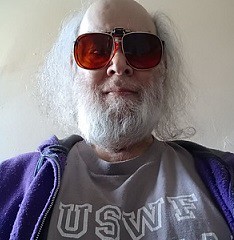Tuesday, December 20, 2005
Hello, Big Boy: World S.U.M.O. Challenge Coming to ESPN2 Dec. 24 and 30
For the past decade and a half or so, there have been numerous attempts in the U.S. at starting new combat sports organizations and leagues. Many have met with fierce opposition stemming both from the ignorance and corruption of various politicians, as well as the gross blunders committed by their organizers in positioning and marketing these events as bloody, brutal brawls, whether they were so or not.
Some events just never got off the ground, due in part to the amateurishness of their organizers, their failure to listen to professional advice from experienced people in the combat sports world, and the failure of rival promoters in their given sport to band together to establish one credible league featuring the top athletes in that sport competing against one another for what would become comprehensible and credible championships.
After losing countless millions of dollars, a handful managed to gain a foothold as fringe events, mainly by imitating the culture of the fake pro "wrestling" and directly marketing to that fan base. While putting on real fights, they proved themselves clueless about marketing their events as sports and threw away the honor, dignity, and respect associated with most of the combat sports in favor of higher ratings fueled by trash-talking, brawling short on technique, and the spectacle atmosphere promulgated by their de facto spiritual mentor, Vince McMahon. In doing so, they effectively prostituted their events and left the real sports world for the purgatory known as sports entertainment.
The backdrop of all this is the decline and gradual marginalization of boxing. No longer a mainstream sport regularly telecast on the largest American networks with events regularly held in the largest arenas, boxing has devolved into a niche sport whose main fights are only available in most countries on pay$per$view for hefty fees, far more than a six-pack of beer.
Yet the masses want to watch fights as much as ever, perhaps even more these days than in recent decades. Fighting provides wonderful entertainment in these increasingly contentious times, and even offers guidance on how to proceed strategically and tactically in everyday battles outside the realm of sports (and should have for the current New York transit strike, a point we may return to soon).
As I have reported, a new combat sports company has recently emerged that thus far appears to be getting most of it right.
That organization, known as Big Boy Productions, put on a major international professional sumo tournament in the main arena of New York's Madison Square Garden on Oct. 22, 2005. The build-up to this event saw almost unprecedented coverage, for a combat sport anyway, in virtually every mainstream media outlet in New York, including all over the TV and radio and in every daily newspaper.
On the night of Oct. 22, the Garden was filled with an enthusiastic crowd. Many of the top sumo wrestlers from around the world were competing, including several who had just wrestled in the 2005 world championships held shortly before this event.
The tournament format was easy to understand and well explained both in the printed program and on the huge overhead screen in the Garden. While, like every other sport, there were a handful of controversial calls, the instant replay, also shown to the crowd on the big screen, showed that the officials basically made the right call in almost every instance, if not all of them. Even some mistakes which were made, such as the absence of a post-event press conference, could easily be corrected.
The next step for this organization was television. An announcement was promised by its organizers of a TV deal, and now we have it.
ESPN2 will show this event as two back-to-back one-hour specials. This will be shown on Saturday, December 24, 2 to 3 PM and 3 to 4 PM ET, and repeated on Friday, December 30, 10 to 11 PM and 11 PM to midnight ET.
The live show has to be deemed a success. But the future of this organization rests to a large degree upon how it looks, and draws, on television. The organizers hope to start a regular tour and have a regular cable show in 2006. These showings, announced on short notice and scheduled during the holiday season, will play an important role in determining the fate of professional sumo in the U.S.
You can find out more info at the event's web site at http://worldsumochallenge.com/ and in this press release just released Tuesday:
For Immediate Release
“WORLD S.U.M.O. CHALLENGE -- BATTLE OF THE GIANTS,” TO BE TELEVISED AS TWO-ONE HOUR SPECIALS ON ESPN2 DECEMBER 24, 2 TO 4 PM, AND DECEMBER 30, 10 PM TO MIDNIGHT
Taped at Madison Square Garden on October 22, 2005, Programs Feature 24 World-Class Heavyweight Sumo Wrestlers Competing in New York City’s Biggest International Sumo Competition Ever!
ESPN2 will telecast two one-hour specials, back to back, on Saturday, December 24, 2 to 3 PM and 3 to 4 PM (repeated on Friday, December 30, 10 to 11 PM and 11 PM to midnight), featuring all the action and excitement of WORLD S.U.M.O. CHALLENGE -- BATTLE OF THE GIANTS, the international world-class Sumo competition taped at Madison Square Garden on Saturday, October 22, 2005. The competition attracted 24 of the world’s best heavyweight Sumo wrestlers from countries all over the globe who competed for the 1st World S.U.M.O. Challenge Cup.
Presented by Big Boy Productions, LLC, a New York-based sports and entertainment production company whose mission is to develop and present world class international SUMO to national and international audiences, the championship competition was sanctioned by the International Sumo Federation, the Japanese-based world governing body for Sumo. The Garden competition attracted more than 10,000 enthusiastic fans and was the inaugural event of a new international Sumo organization – Sumo Ultimate Masters Organization (S.U.M.O.) – which is currently setting up tours of North and South America for the spring of 2006 and Europe for the summer of 2006. The tour will be broadcast on national television. The 2nd Annual World S.U.M.O. Challenge has already been booked into Madison Square Garden for October 2006.
The Sumo competition at the Garden, governed by traditional Japanese Sumo rules, was contested in the main arena and featured the spirituality and mystique inherent in traditional Sumo wrestling. It was punctuated by spectacular special effects as well as live music provided by Taikoza, a thunderous percussion group that features taiko drums – large barrel-like drums that produce a magnificent sound -- creating a visual and audio treat for spectators.
The two dozen wrestlers who competed in the 1ST ANNUAL WORLD S.U.M.O. CHALLENGE – BATTLE OF THE GIANTS, and are featured on the ESPN2 telecasts, represent Japan, Bulgaria, Hungary, Germany, Netherlands, Norway, Poland, Republic of Georgia, and United States. They include: Georgiev Stiliyan and Petar Stoyanov (Bulgaria); Jorg Brummer, Karsten Grapp and Torsten Scheibler (Germany); Dezso Libor and Barnabas Toth (Hungary); Mitshuhiko Fukao, Takayuki Minami and Kaleo (Japan); Sydney Carty (Netherlands); Ronny Allman and Hans Borg (Norway); Jacek Jaracz, Marek Kraszewski, Marek Paczkow, Robert Paczkow and Marcim Roczum (Poland); Levan Altunashvili, Jondo Dabrundashvili and Levan Ebanoidze (Republic of Georgia); and Kena Heffernan, Oni pa’a Imua Pa’a’aina and Harrington Wa (USA).
The ESPN2 TV commentary is provided by sportscaster Al Pawlowski with expert commentary by the 67th Yokezuna, Masashimaru. The emcee at the Garden is Ryan McDonough.
Executive Producers are Big Boy Productions (Noah Goldman and Jeff Daniels) and Executive Producer of the television specials is Ron Honsa. The event producer is Ted Kudyla. The post-production services were provided by Moving Pictures and the programs were edited by Alan Miller.
Sumo wrestling is one of the oldest forms of martial arts and Japan’s national sport. The most notable feature of the sport is the size of the athletes, ranging from 275 to 600 pounds. Sumo opponents battle barefoot and wear a mawashi, a traditional loin cover. The object is to throw your opponent outside an 18-foot ring or knock him to the ground. Wrestlers use many moves, including the oshi-dashi, or push, to drive an opponent backward, and the tzuki-dashi, or slap, to upset an opponent’s balance. A typical fight lasts less than one-minute; if a bout goes as long as three-minutes, there is a short pause after which the combatants go at each other again. In addition to fierce aggression, Sumo is a sport with solemn traditions, including a pre-fight ritual where opponents squat facing each other and open their hands to show they have no weapons.
Sumo is currently contested in more than 80 countries around the world. Because of its growing international popularity, the sport is being considered for inclusion in the Olympics, possibly as early as the 2012 Summer Games.
Comments:
Post a Comment















